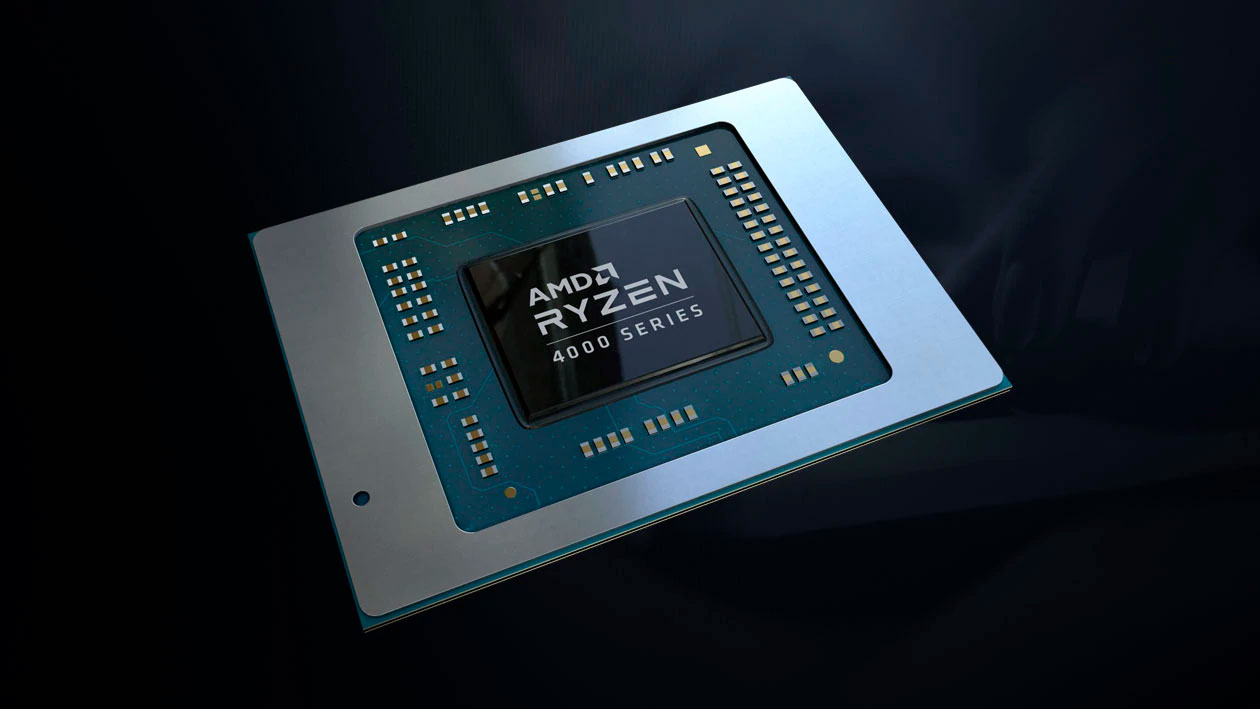AMD Ryzen 4000 Benchmark Results Show 30 Percent Performance Gap Between 4800U and 4900HS
Earlier this month, AMD announced the Ryzen 7 4800U and Ryzen 9 4900HS as the upcoming flagship mobile processors for the Ryzen 4000 U-and H-series, respectively. Although AMD's tailoring the two chips to different markets, hardware leaker @_rogame has given us an alleged sneak peek at the potential performance difference between the two chips.
The Ryzen 7 4800U and Ryzen 9 4900HS (codename Renoir) share similar ingredients. Both APUs leverage AMD's Zen 2 microarchitecture and are product of TSMC's 7nm FinFET manufacturing process. Each processor has eight cores, 16 threads and 8MB of L3 cache. They even feature the same integrated graphics (iGPU), which consists of eight Vega graphics cores that peak at 1,750 MHz. But that's where the similarities end.
The Ryzen 7 4800U is aimed at thin-and-light laptops, so it's forced to run with a 1.8 GHz base clock and 4.2 GHz boost clock to respect the 15W TDP (thermal design power) limit. The Ryzen 9 4900HS, part of AMD's HS design standard for the best gaming laptops, has a higher TDP. With a more generous 35W envelope, the Ryzen 9 4900HS operates with a 3.0 GHz base clock and 4.3 GHz boost clock.
According to the leaker, the Ryzen 7 4800U system was using LPDDR4x memory clocked at 4,266 MHz. This configuration enabled the Ryzen 7 4800U to achieve Physics and Graphics scores of 16,171 point and 3,543 points, respectively.
The Ryzen 9 4900HS reportedly put up a Physics score of 21,289 points and a Graphics score of 4,085 points in the same benchmark. Therefore, the Ryzen 9 4900HS appears to deliver up to 31.6% better performance, at least on the Fire Strike benchmark.
- The best gaming desktops out now
- Breaking News: Intel Core i9-10900K could outperform i9-9900K by 30%
The iGPU performance looks like it's up 15.3% higher on the Ryzen 9 4900HS as well. This could be explained by the Ryzen 9 4900HS' 20W higher TDP allowing the iGPU to sustain higher operating clocks for a longer period.
The Ryzen 7 4800U's greater number of cores help push the chip ahead of its Intel rivals, such as the Intel Core i7-1065G7, a quad-core Ice Lake chip, and the Core i7-10710U, a hexa-core Comet Lake part. Intel's offerings purportedly scored 11,996 points and 13,723 points, respectively, on the Physics test. Therefore, the Ryzen 7 4800U is presumably up to 34.8% and 17.8% faster than the i7-1065G7 and i7-10710U, respectively.
Get Tom's Hardware's best news and in-depth reviews, straight to your inbox.
An unknown Tiger Lake-U (TGL-U) processor at 2.7 GHz seemingly achieved a Physics score of 13,030. The leaker didn't specify if it's the same quad-core Tiger Lake-U part that previously appeared at SiSoftware. Performance-wise, the Ryzen 7 4800U looks like it offers around 24.1% higher performance than the mysterious Tiger Lake-U. We were more interested in the iGPU performance, but, unfortunately, the leaker didn't reveal the Graphics score for the Tiger Lake-U processor.

Zhiye Liu is a news editor, memory reviewer, and SSD tester at Tom’s Hardware. Although he loves everything that’s hardware, he has a soft spot for CPUs, GPUs, and RAM.
-
jimmysmitty A higher watt part with a higher base clock is performing quite a bit ahead of a lower power part?Reply
Color me shocked. -
hannibal What shocks me is that 15w versio is only 30% slower than 35w version!Reply
The 15w version seems to be very promising indeed! -
ezst036 I wish AMD would release a 15W TDP processor for socket AM4. Fanless computers are so much nicer.Reply -
AlistairAB Replyezst036 said:I wish AMD would release a 15W TDP processor for socket AM4. Fanless computers are so much nicer.
35W is very easy to cool passively too. I just want any of the new mobile parts for desktop. -
Gillerer Replyezst036 said:I wish AMD would release a 15W TDP processor for socket AM4. Fanless computers are so much nicer.
You can get pretty close with an Athlon 3000G (35W, Zen 1) - in TDP-down mode it's 25W.
If it's used for light tasks like browsing or video playback, just slap on a large sparse heatsink in a well-ventilated case and let it simmer at 70 - 95°C. If the temperatures exceed that, the APU will throttle itself before it gets damaged. -
watzupken I feel if the 15W chip comes with a dedicated GPU, it is possible the CPU gap will be smaller. Problem with the 15W APU is that the CPU and GPU don't have a lot of power legroom to stretch. As a result when under load, both suffers. With a dedicated GPU, the CPU can have all the resources and power to give it a higher boost.Reply
Anyway, it is good to see that the gap between the 2 is actually quite small. Shows how much benefit in terms of power savings is realized as a result of a move to 7nm. After all, Zen 2 chips is supposed to be a die shrink from the Zen 1 architecture with some tweaks to improve IPC. -
Gillerer Replywatzupken said:Anyway, it is good to see that the gap between the 2 is actually quite small. Shows how much benefit in terms of power savings is realized as a result of a move to 7nm. After all, Zen 2 chips is supposed to be a die shrink from the Zen 1 architecture with some tweaks to improve IPC.
I think Zen 2 is far more than that. It was Zen+ (12nm, found in the 3000 series 2nd gen Ryzen APUs) that was a shrunk and optimized version of Zen 1 (14nm, found in the 2000 series 1st gen APUs).
*
Cooling and heat mass of laptops will heavily affect results from short intensive tests.
If a laptop CPU has a large effective heatsink (from being connected to a metal chassis, for instance), it can retain high clocks for a couple of minutes. Fan speeds or curves will also affect results. If the test has a limited duration and the system hasn't been pre-heatsoaked, that test can't be a realistic measure of performance under longer loads.
Since we don't know what kind of systems the CPUs were running (no doubt different systems and different size systems), or whether fan speeds or fan noise were normalized (very likely not), these results don't have any other meaning than "depending on the systems and setup, these CPUs can have this kind of relative performance".

